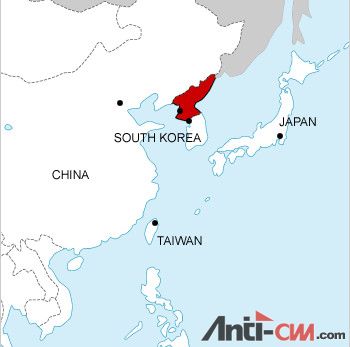North Korea
原文链接:http://apac2020.the-diplomat.com/flashpoint-asia/north-korea-2/

From time to time the question arises of whether North Korean dictator Kim Jong-il is crazy or clever. Regardless, it can be safely said that he’s a survivor. For, contrary to the expectations of many US experts, the DPRK has not collapsed from the willful mismanagement of an increasingly discredited command economy. Even until recently, it has been able to demand and receive subsidies in the form of grain and fuel oil from the United States and South Korea (ROK). However, these payments were made with the expectation that Kim Jong-il’s regime would eventually divest itself of its primitive but functioning nuclear infrastructure through the Six Party talks that involved all of the geo-strategic players of Northeast Asia: China, Japan, Russia, South Korea, North Korea and the United States.
But this process has now all but broken down, with the regime deciding sometime during the winter of 2008-09 that it could tear up this multi-lateral denuclearization process in favor of an aggressive effort to gain US and regional acquiescence of the DPRK’s status as an enduring nuclear-armed state. Dramatic action occurred during the winter and spring of 2009 that included the partially successful launch of a multi-stage satellite launch vehicle and the detonation of a second nuclear device. There was also much speculation that the North Korean regime was in deep crisis due to mounting evidence of Kim Jong-il’s declining health. These events combined were severe enough to prompt the new US administration to make an explicit, extended deterrent pledge to South Korea– any use of nuclear weapons by the DPRK might well result in a US nuclear response.
Throughout this period, Beijing has played an ambiguous role. As the main source of economic assistance and trade, China has considerable leverage over North Korea. But the Chinese leadership also appears uninterested in bringing down a North Korean regime through economic pressure. It rightfully fears that any collapse of North Korea will result in massive refugee flows into northeast China and/or dramatically increases the risks of an outright second Korean War. Further, much of the Chinese leadership appears unwilling to see a united Korea emerge on its geo-strategic doorstep–even if that new Korean regime is willing to radically reduce its military ties with the United States.
In typical North Korean negotiating fashion, this crisis period was followed by a new round of mixed signals suggesting a possible return to the Six Party talks… but only if sufficient political and economic considerations were offered. Not surprisingly, the United States and South Korea have not shown much enthusiasm for agreeing to such a deal again. The US has initiated a new round of bilateral discussions with the DPRK to ‘jump start’ a resumption of the Six Party talks without making any promises of renewed economic assistance. The South Korean government of President Lee Myung Bak has taken a similar ‘hard-line’ approach (unlike those of the two previous South Korean regimes, with their now obviously futile attempt at a ‘Sunshine Policy’ of economic and political appeasement.)
Furthermore, US and ROK national security ties have been reinforced with the US commitment to maintaining a robust military presence in South Korea, even after the latter’s national high command takes over formal command of all US and ROK forces by 2012. This transition reflects the two nations’ confidence in the evolving military balance between North and South Korea–the ‘conventional’ military balance has tilted decisively in favor of the ROK and its US ally. Only the threat of missile delivered weapons of mass destruction, artillery and missile strikes against Seoul or the use of Special Forces remain credible DPRK threats. Furthermore, this process will facilitate the reconfiguration of the US forces into two permanent garrisons south of Seoul.
The North Korean regime continues to blow hot and cold with moments of pledged reason alternating with shrill military threats. At the present time, the most worrisome military flash point appears along the contested sea boundaries that extend from the western coast of the demilitarized zone (DMZ). The most recent naval clash between ROK and DPRK naval forces occurred in the autumn of 2009, just when the US administration was taking a number of diplomatic initiatives to resume a negotiating with Pyongyang.
All of these recent events are sure to leave an outside observer with a profound sense of unease. We may at the same time be witnessing the end of the Kim Jong-il regime due to terminal illness, something that could well lead to a succession crisis that could turn bloody and very dangerous. On the other hand, Kim Jong-il may surprise us all by living longer while still attempting to secure US and regional acquiescence of North Korean nuclear armed missile arsenal. In this case, an agreement to dismantle the North Korean nuclear arsenal and infrastructure may be out of reach with or without Kim Jong-il, with the rest of the world left ‘hoping for the best, but preparing for the worst.’
Put simply, the United States and its East Asian allies and diplomatic partners may simply have to wait for the North Korean regime to quietly come to an end without igniting a regional conflict that would be called the second Korean War. Hope and continued enhanced military preparedness may not be a very satisfactory strategy, but it may the best of some very worse alternatives.
作者:
Peter A. Wilson
简介:Peter A. Wilson is a senior analyst at the RAND Corporation. The views expressed in this essay are not those of RAND or its clients. |